Lots of people don't realise it, but there is quite a wide variety of marine life that can really make a shore trip thoroughly unpleasant, or worse, land you in hospital or even kill you.
When I first started out on the shores, I did everything with my bare hands, whether it was flipping over rocks, or picking up molluscs and crabs. Then I got smarter and wore gloves, the sort worn by durian sellers. I finally got myself a pair of cheap gloves made from rubber and polyester, similar to the sort worn by scuba divers. They've certainly protected me from the stings of anemones and the spines of sea urchins, and allowed me to handle dead fish without direct contact with my skin, but today, I realised that these gloves aren't always enough to protect my hands from potentially dangerous marine animals.
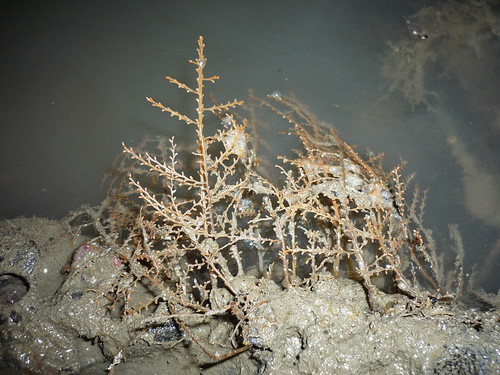
Hydroids, with their featherlike appearance, may look fragile, but they pack a punch. I haven't been stung by hydroids before, and I don't really want to know how it feels like to brush against them on a day when I'm not wearing my gloves.
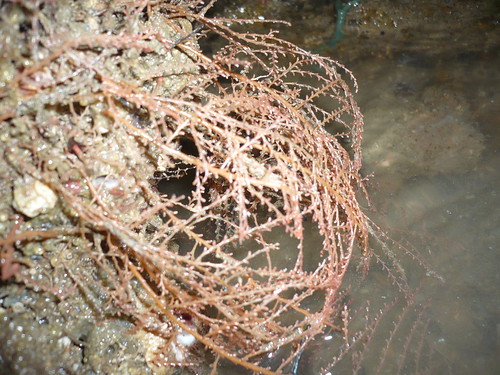
Still, aren't they pretty to look at?
Near the end of our explorations, after the sun had risen, I first noticed a familiar pink shape squirming in the wet sand. "Bristleworm!"
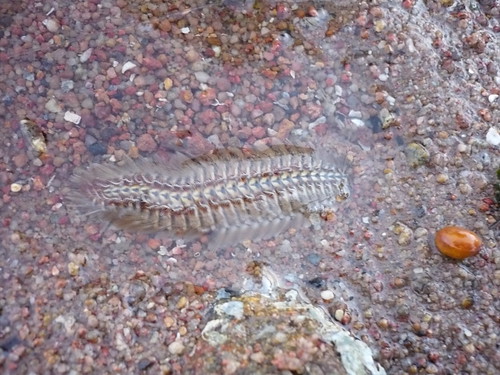
It's Chloeia, a species of amphinomid polychaete that is quite often seen on these northern shores.
These worms are often nicknamed 'fireworms', because of the fine setae ('hairs') that they possess. These break off easily and can become embedded in the skin, causing itchiness, inflammation and rashes. Certainly an effective defense against predators. You can think of them as the marine equivalent of hairy caterpillars, many of which are covered in urticating hairs and should NEVER be picked up with bare hands. If there's any consolation, according to this paper, there are no toxin-producing glands associated with the setae.
As we gathered round, I noticed that the worm was not alone. "Hey, another one!" "One more!" "And another one!"
In all, there were at least seven of these worms on a small patch of beach!
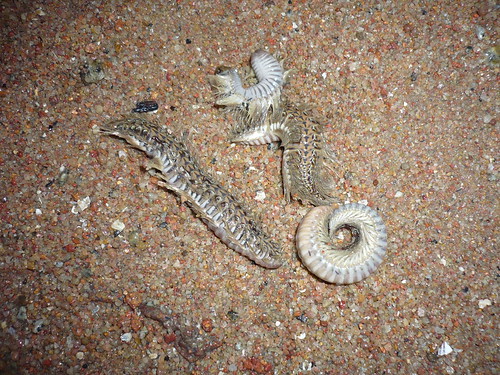
Seeing them writhe about makes my hair stand.

These worms were being mobbed by springtails (Pseudanurida billitonensis ), which are tiny 6-legged arthropods closely related to insects. The springtails commonly found on our shores are carnivores, scavenging and feeding upon dead and dying marine animals washed up on the shore.

Here's a heavily zoomed-in photo of some springtails, taken by Marcus.
Anyway, I digress.
Since I was wearing a glove on my left hand, I was pretty confident in handling these worms without harm.
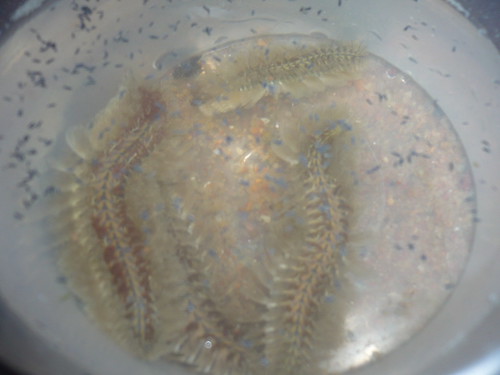
I put some of these worms together in a container. The black dots are the springtails.
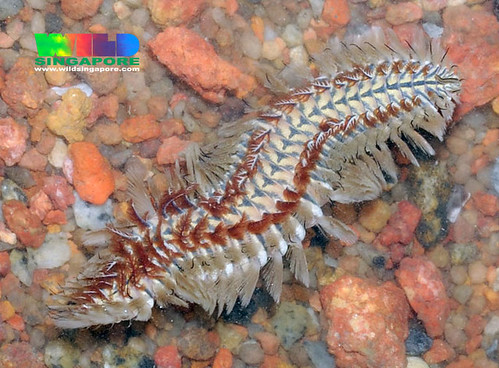
(Photo by Ria)
These worms can swim, using wavelike movements of their parapodia and setae to paddle themselves along. We were keen on documenting this swimming behaviour, so I picked one up, and placed it in a small sheltered pool among the rocks.
That was when things didn't quite go exactly as I expected. A few seconds after placing the worm in the water, my fingertips inside the glove started to itch. It was a mild burning sensation, which to me felt like a mixture of pinpricks and being bitten by several ants.
I quickly took off my glove and dipped my hand in the sea (NOT the same pool the worm was swimming in). Thankfully, the itchiness quickly subsided. Maybe only a few of the setae managed to penetrate my glove and reach my fingertips, which would mean that I didn't get a full dosage of the worm's potential firepower.
From now on, I'm never handling Chloeia ever again. What's up with these worms named after women? Eunice has sharp jaws that can deliver a painful bite, and Chloeia is covered with tiny stinging 'hairs'. Ugh.

(Photo by Kok Sheng)
We returned the worms to the beach, by tipping the container over. Some of them headed out to sea, but one was almost immediately attacked by a small swimming crab! I guess the hard exoskeleton of the crab provides some protection from the worm's setae.
So these worms do have their enemies, despite their urticating setae.
To end off, the setae of fireworms really do cause a burning, itchy sensation, and they do cause numbness. I was wearing gloves, so I was protected from the worst of it, but I still got affected. So don't go around picking up these worms with your bare hands, or you'll definitely regret it.
Well, it could have been a lot worse for me, based on what I've been reading. I'm glad that my cheap gloves worked pretty well in protecting me, even if it was only up to a certain extent. Thorough washing under running water should have removed any setae left on my glove, and my fingers are fine, though I must admit, while I'm typing this entry, there is a slight numbness in the index and middle fingers of my left hand, which were the most severely affected by the setae.
Hmm... maybe I should get someone adventurous (or downright silly) enough to see which is worse: having a handful of hydroids, or a fistful of fireworms? We could do something like the marine equivalent of the Schmidt Sting Pain Index (with descriptions of various ant, bee and wasp stings from "a tiny spark has singed a single hair on your arm", to "like fire-walking over flaming charcoal with a 3-inch rusty nail in your heel"), comparing the severity of the stings of a variety of marine organisms. Of course, with creatures like stonefish, stingray, and cone snails, there is a very real element of risk involved. But hey, it's worth making such a sacrifice for science!
Coming up: Death on the shores. Is the release of captive animals kindness or cruelty?
This is part 3 of a 4-part series on a trip to Changi on 21st May, 2008.
Part 1: Changi's Hidden Wonders
Part 2: Echinoderm Hangout
Part 3: Do not touch! (this post)
Part 4: Death on the shores
DISCLAIMER: The writer will not be held liable for any pain, agony, trips to the hospital, medical fees, or deaths resulting from attempts to fool around with venomous, biting, stinging, or otherwise potentially harmful marine organisms.